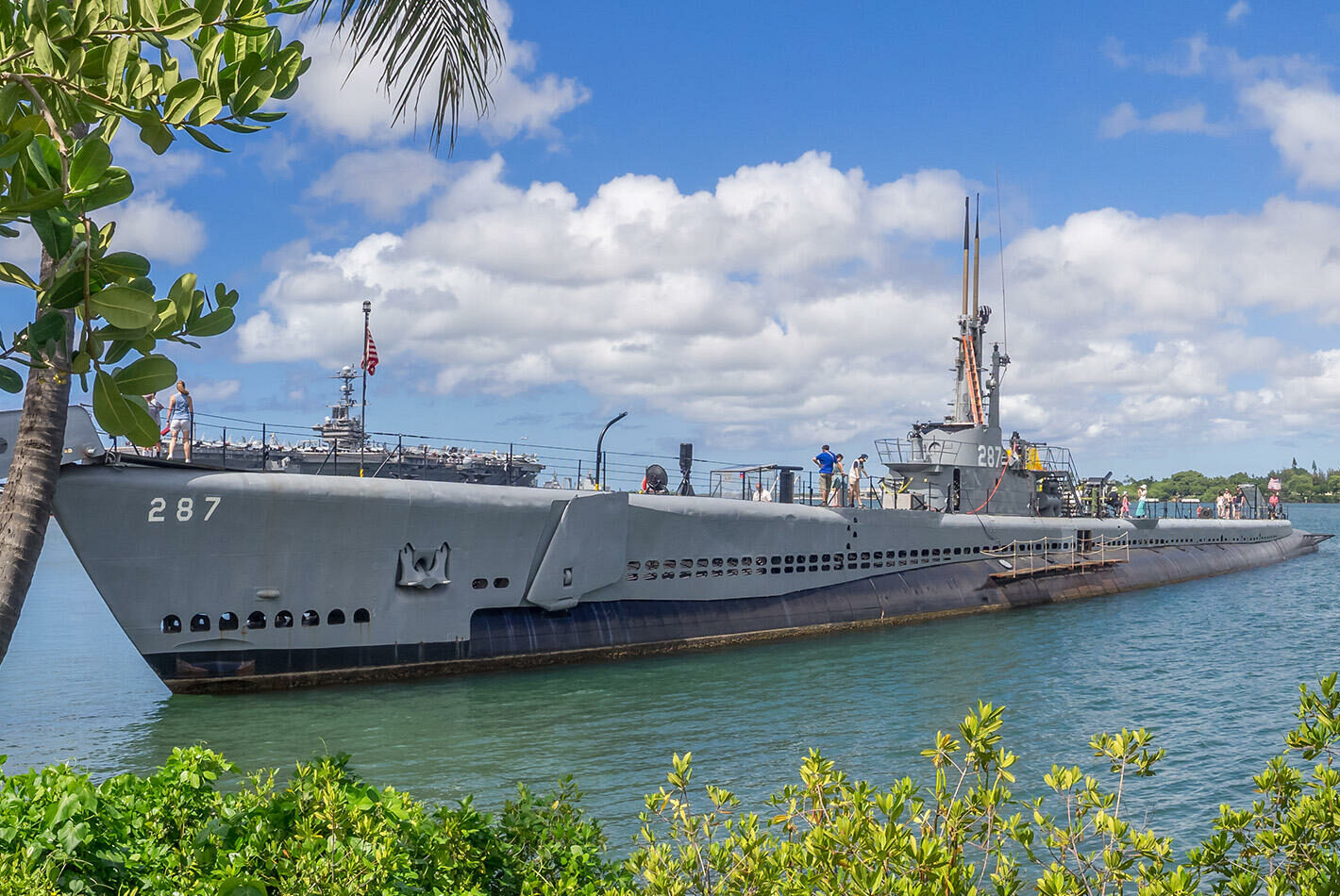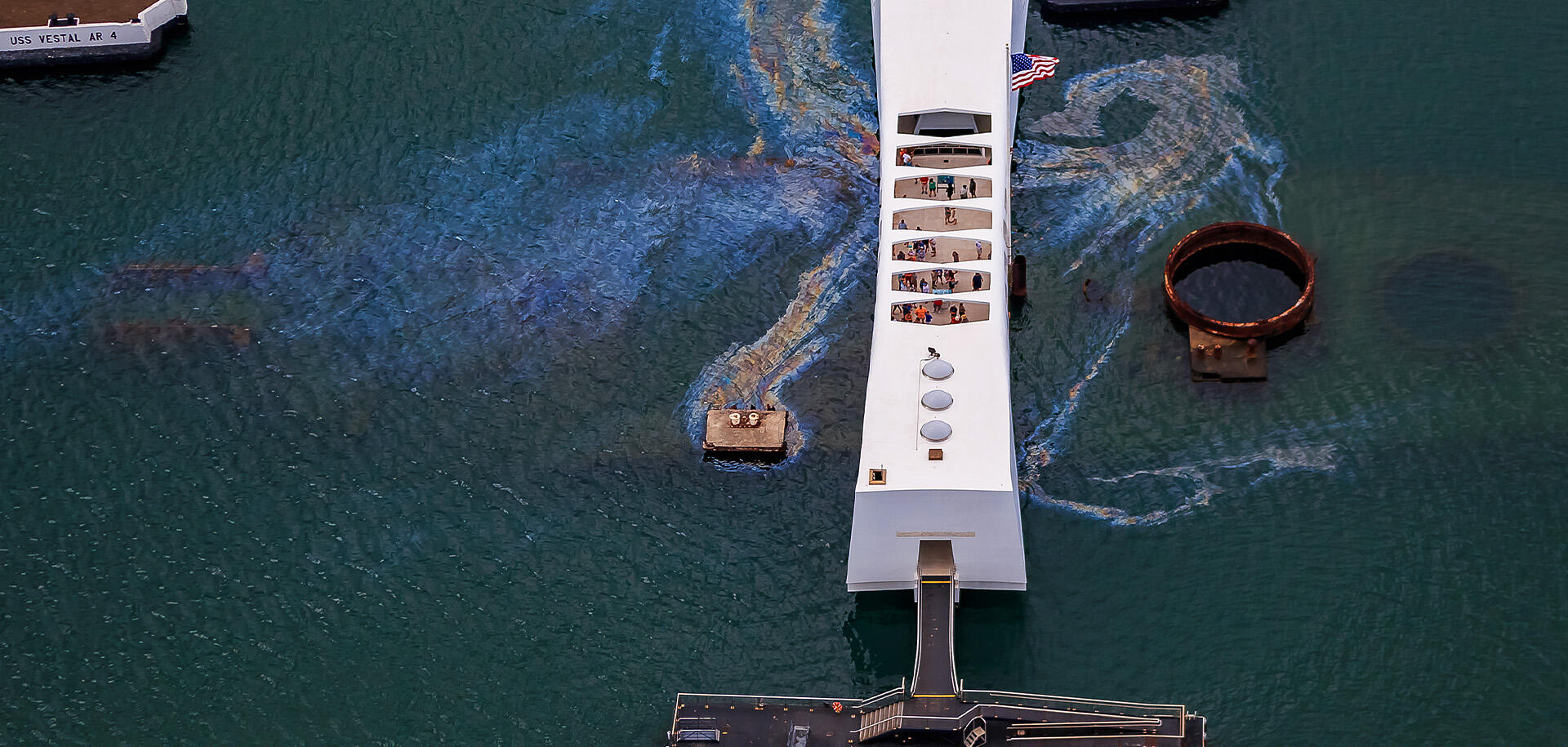


The Pacific Fleet Submarine Museum
The museum is a 10,000-square-foot display of over 4,000 submarine-related relics and artifacts. Museum guests can see battle flags, recruiting posters, and even a dissected Poseidon missile. On the surrounding park grounds, more relics from the war can be found, including the periscope of the USS Parche—another highly decorated submarine of the war—and a Japanese Kaiten, or manned torpedo.
Explore the USS Bowfin
Visitors over the age of four have the opportunity to explore the inside of a real World War II-era submarine. Get a feel for life under the sea in cramped conditions, and you’ll gain new respect for these brave sailors.
See the evolution of Submarine Technology
Submarine technology has certainly evolved since ancient times. Informative exhibits at the museum explain the origins of submarines in detail, and the complicated engineering of modern submarines which far surpasses the ability of the USS Bowfin, that have features such as nuclear-powered engines and noise-reduction technology.
Impressive Exhibits
The museum features indoor and outdoor displays of intricate 3D models, detailed weapons systems, and replica bombs used by Japanese and American forces during the conflict. Artifacts in the museum and on the grounds surrounding it include the bell of the USS Bowfin, the battle flag, and a Purple Heart given to the Bowfin’s only wartime casualty, Reid Lee. Find artifacts of four other World War II-era submarines, their bells, and battle flags. The impressive collection also includes the Conning Tower from USS Parche (SS-384), the McCann Rescue Chamber, and a Poseidon C-3— a 12,000 lbs and 34 feet long missile dissected to show the inner workings of this fearsome weapon of war.
The Waterfront Memorial
As with any class of vessel that served in the US Navy during World War II, submarines suffered a great number of losses. An estimated 52 submarines in total were lost and, with them, just over 3,500 submariners. The losses were terrible, but what’s worse is that the remains of those lost when a submarine is destroyed are typically never recovered. The memorial outside the museum is dedicated to these brave men and the ships on which they served. Fifty-two plaques are arranged in a semi-circle around the American flag, detailing the specifics of each of the lost submarines. Information includes the vessel’s history and the names of the crew who were serving on board when she was sunk.
Launched exactly one year after the Japanese attack on Pearl Harbor, the USS Bowfin (SS-287), was dubbed the “Pearl Harbor Avenger.” She went on to become one of the most decorated submarines of the Pacific Theater, credited with sinking more than a dozen enemy vessels.
After being commissioned into service on May 1, 1943, USS Bowfin immediately went to war. The Bowfin submarine took part in nine different patrols that took her across the Pacific. From the South China Sea to the Sea of Japan, the Bowfin patrolled enemy waters, sinking a number of enemy vessels like the Kirishima Maru, which she helped the USS Billfish sink on her first patrol. In total, the Bowfin is credited with sinking over 30 vessels and damaging another seven. In comparison to the 288 other submarines deployed by the US Navy and which saw combat during World War II, the Bowfin ranked 15th in the number of ships sunk during her patrols.
After the war ended, Bowfin returned to the east coast of the US, where she was decommissioned for the first time in February, 1947. She would be recommissioned twice more before finally being removed from service on December 1, 1971, when she was struck from the Naval Vessel Register.
After her final decommissioning in 1971, the USS Bowfin could have become just another vessel of the US Navy broken down and sold for scrap. Instead, the iconic submarine was in for a better fate: to serve as a lasting reminder of how the United States picked itself up after the December 7, 1941 attack on Pearl Harbor and went on to win the War in the Pacific.
After being acquired by the Pacific Fleet Submarine Memorial Association in 1979, Bowfin was brought to Pearl Harbor to become a permanent fixture open to the public.
Unlike the memorials dedicated to the men lost on the USS Arizona (BB-39) and USS Oklahoma (BB-37), the USS Bowfin is a broad educational experience providing a look into the history of underwater warfare. Submarines played a large part during World War II, and Bowfin was one of the most successful.
Turning Bowfin into a visitor-friendly tourist destination didn’t happen overnight. The Pacific Fleet Submarine Memorial Association (PFSMA) acquired the vessel in 1979, thanks to an act of Congress passed on Aug. 10, 1956. Under the act, the Secretary of the Navy could transfer obsolete vessels to a non-profit organization under the promise of continued restoration and preservation.
Once in the possession of the PFSMA, Bowfin was first towed to Pier 39 in Honolulu, and later to her permanent home at Pearl Harbor, adjacent to the Pearl Harbor Visitor Center. This is where she stands today, a fitting addition to the Pearl Harbor Historic Sites despite having no direct connection to the attack. Five years after moving to Pearl Harbor, Bowfin was declared a National Historic Landmark
Only one creature in the ocean is feared more than any natural predator: the submarine. Capable of swiftly sinking enemy ships from the darkness of deep waters and quietly infiltrating hostile territories for the support of Allies behind Axis lines, the USS Bowfin was armed with two dozen high-velocity torpedoes and an array of high-caliber firearms to defend the lives of both the men on board and the lives of their families at home in the United States.


Be aware of the age requirements. Children under 4 yrs old are not allowed in or on the submarine. That does not mean that they cannot visit the Bowfin Memorial. There is more to see there than just the submarine. This should not keep you from going.
Though you may be tempted to bring along a bag, you won’t be able to board the Bowfin with a backpack, purse, fanny pack, luggage, camera bag, or diaper bag. In fact, bags of any kind are not allowed anywhere at Pearl Harbor. There is a flat-rate bag storage facility near the entrance. Savvy visitors know to not bring anything that can’t be carried in their pockets.
A day at Pearl Harbor can be a long one, and the inability to pack a snack bag can make people grouchy. Luckily, there is a snack bar near the Bowfin that will help keep stomachs from grumbling. While the Bowfin has food offerings, most people prefer to eat at the USS Missouri or at the Pacific Aviation Museum. Those have more choices and full cafes.
The Bowfin is not as large as the USS Missouri or the Pacific Aviation Museum. If you have only 20 minutes, you should still visit the Bowfin. You will not have time to read every plaque and see every exhibit, but you can get the feeling of life in a WWII submarine.
Many people go to the Bowfin and board the submarine, but do not go inside to the museum. Besides the comfortable air conditioning on a hot day, the museum has some fascinating exhibits.
If you are claustrophobic, going inside a submarine will not be fun. You might pass on this one if that is the case. You can get great photos of it from the shore. It is close to the Pearl Harbor Visitor’s Center and absolutely worth the short walk.
It is operated separately from the Arizona’s gift shop and has items that you will not find in the other Pearl Harbor shops.
